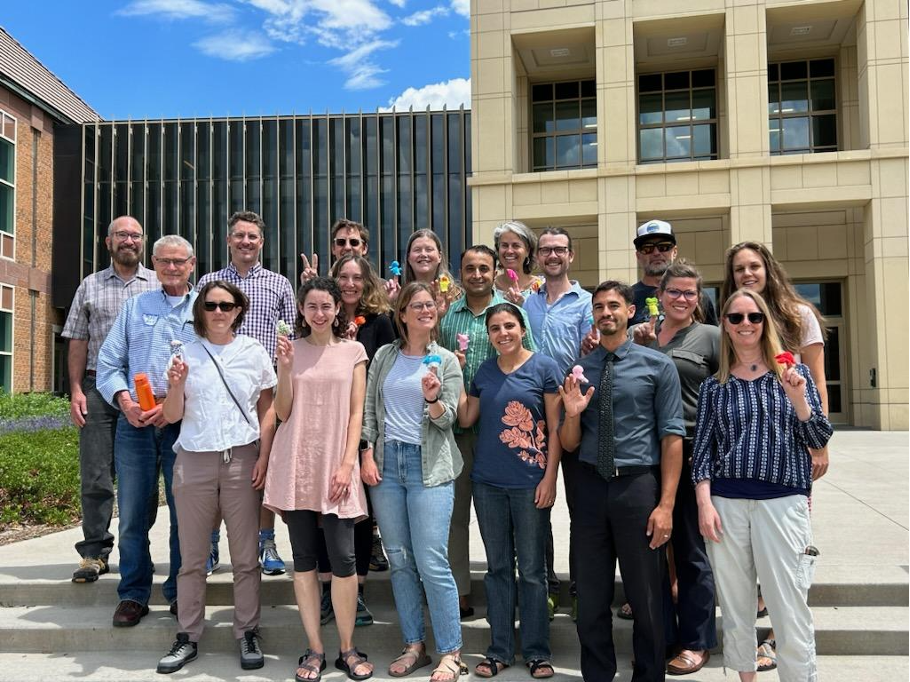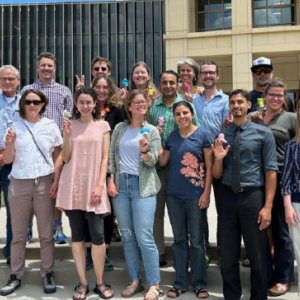Ecological Scenarios Working Group convenes for NC CASC Workshop
Date

Top row (left to right): Joe Barsugli (NOAA/CU), Orien Richmond (USFWS), Tyler Hoecker (NW CASC/ University of Montana), Dawn Magness (USFWS), Angie Moline (Facilitator, Moline Creative), Jonathan Coop (Western Colorado University)
Middle row (left to right): William Travis (NC CASC), Meagan Oldfather (USGS/ NC CASC), Imtiaz Rangwala (NC CASC), Brian Miller (USGS/ NC CASC), Amber Runyon (NPS), Luca Anna Palasti (CU Boulder, Dept. of Geography)
Bottom row (left to right): Robin Russell (USFWS), Kyra Clark-Wolf (NC CASC), Wynne Moss (USGS), Helen Sofaer (USGS), Tony Ciocco (USGS/ NC CASC), Jena Lewinsohn (USFWS)
Not pictured: Nifer Wilkening (USFWS)
Ecological Scenarios Working Group convenes for NC CASC Workshop
On July 18-19, 2023, a group of multidisciplinary scientists from Utah, Montana, Hawaii, Colorado, and Alaska joined the NC CASC in Boulder, Colorado for the Ecological Scenarios Workshop, co-led by NC CASC’s Kyra Clark-Wolf, Imtiaz Rangwala, Wynne Moss, and Brian Miller. This event was part of a two-year project that aims to use team science to develop a shared vision of approaches for crafting ecological scenarios, which are useful for informing resource management planning in situations when there is high uncertainty about ecological changes under future climate.
The group tackled a twofold challenge: determining how to robustly explore divergent ecological responses while simultaneously synthesizing a tractable set of outcomes usable for management planning. Led by graphic facilitator Angie Moline (Moline Creative), participants brainstormed workflows and desired attributes for generating ecological scenarios that can inform management decisions. Moline helped to synthesize insights from the workshop through visual note-taking (example below).
The Ecological Scenarios Working Group will continue to build on this work in the coming months, in part through an applied case study in the Nebraska Sandhills, which will test and refine their ecological scenarios work. The Sandhills is a uniquely intact grassland ecoregion with high conservation, which faces uncertain outcomes under future climate, making it ideal for this case study. This research will result in 1-2 publications as well as training materials for managers; additionally, the research effort will be presented at the Ecological Society of America conference this August. Stay tuned for future updates!


